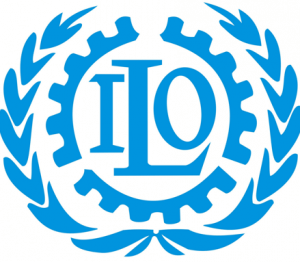ILO report finds 56% of rural population excluded from healthcare
 A new International Labour Organisation (ILO) report shows that 56 per cent of people living in rural areas worldwide do not have access to essential healthcare services.
A new International Labour Organisation (ILO) report shows that 56 per cent of people living in rural areas worldwide do not have access to essential healthcare services.
According to the report, which was made available to the Ghana News Agency on Wednesday, more than double the figure in urban areas, where 22 per cent are not covered.
The report dubbed: “Global evidence on inequities in rural health protection: New data on rural deficits in health coverage for 174 countries,” reveals major health access disparities between rural and urban areas around the globe, particularly in developing countries.
“The highest number of people in rural areas who are not covered by essential healthcare services is in Africa amounts to 83 per cent. The most affected countries also face the highest levels of poverty,” the report said.
It said the differences between rural and urban areas, however, exist in Asia; for example, in Indonesia, the percentage of people that were not covered was twice as high in rural areas as in urban areas.
“Decades of under-investment in health interrupted efforts to develop national health systems and ultimately resulted in the neglect of health in rural areas. This has a huge human cost. Health is a human right and should be provided to all residents within a country,” Isabel Ortiz, Director of the ILO’s Social Protection Department, said.
The ILO study revealed that even if access to health care is guaranteed by law, people in rural areas remain excluded because such laws are not enforced where they live.
“The situation is worsened by the lack of health workers in the world’s rural areas. Although half of the world’s population live in them, only 23 per cent of the global health workforce is deployed to rural areas,” it noted.
The ILO estimates that seven million out of the total 10.3 million health workers who are lacking globally are needed in these areas.
It said Africa and Latin America are the two regions where this problem is most acute; in Nigeria, for example, more than 82 per cent of the rural population is excluded from health-care services due to insufficient numbers of health workers compared to 37 per cent in urban areas.
It noted that underfunding is closely linked to the unavailability of services, adding that financial resource gaps are nearly twice as high in rural than in urban areas.
It said the largest gaps were found in Africa; however, significant inequities also exist in Asia and Latin America.
It said the extent of impoverishing out-of-pocket payments (OOPs) is also high in rural areas.
The study shows that rural populations in Africa and Asia were burdened with OOPs, amounting to 42 and 46 per cent of total health expenditure.
The study explains that closing rural health access gaps requires a comprehensive and systematic approach that simultaneously addresses missing rights, health workers, funding, financial protection and quality.
It said, as such an approach needs to be based on the principles of universality and equity and calls for solidarity in financing and burden sharing.
The study highlights the key role that national social protection floors could play in reducing and eliminating rural/urban gaps through human rights-based approaches. In this sense, it points to the importance of ILO Recommendation 202 on social protection floors.
“This study shows that investing in rural health, as part of a national health system, is affordable and yields significant economic and social returns. Progress towards universal health protection is possible in any country, irrespective of its level of income,” Ortiz concludes.
Source:GNA
